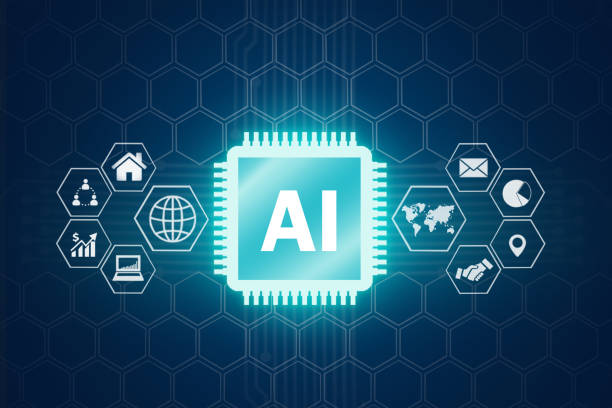Introduction to On-Page SEO and Its Importance

In today’s digital world, being seen amidst a flood of information is a significant challenge.
In this regard, #SEO (Search Engine Optimization) plays a vital role.
However, SEO is not limited to link building and off-site aspects; a crucial part of it is dedicated to #On_Page_SEO.
On-Page SEO, or on-page optimization, is a set of techniques and strategies directly applied to your website’s content and structure to make it more attractive to search engines and users.
The main goal of implementing On-Page SEO is to improve the ranking of web pages in search results and increase organic traffic.
This process includes optimizing title tags, meta descriptions, headings, content, images, and URL structure.
In fact, before search engines can fully understand and rank your site, it must be internally optimized.
The content of this section provides an explanatory approach and guidance to familiarize you with the basic concepts.
Did you know that 94% of users’ first impressions of a business are related to its website design? With professional corporate website design by **RasaWeb**, turn this first impression into an opportunity for growth.
✅ Attract more customers and increase sales
✅ Build credibility and trust in the eyes of the audience⚡ Get free website design consultation!
Keyword Research for Effective On-Page SEO
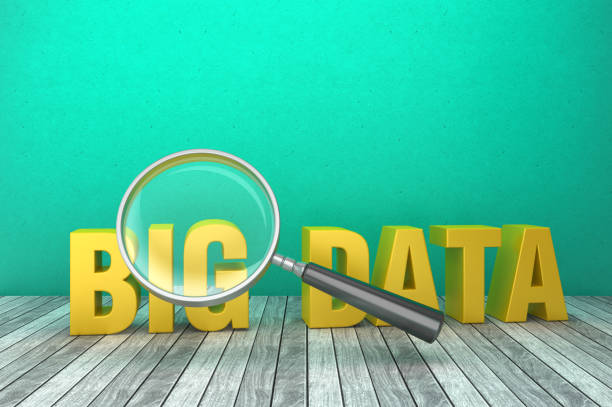
The foundation of any successful On-Page SEO strategy is keyword research.
Without identifying the words your target audience uses to search for your products or services, you cannot produce relevant and optimized content.
This stage involves finding main keywords and long-tail keywords that are less competitive but more precisely indicate user intent.
Numerous tools are available for this purpose that can help you discover search volume, competition levels, and related keywords.
After identifying keywords, you should naturally and logically use them in your page content, title tags, meta descriptions, and headings.
This not only helps search engines better understand your page’s topic but also provides a better experience for users.
This section of the article is analytical and educational, helping you strengthen the foundation of your site’s internal optimization with a specialized approach.
Key On-Page SEO Elements
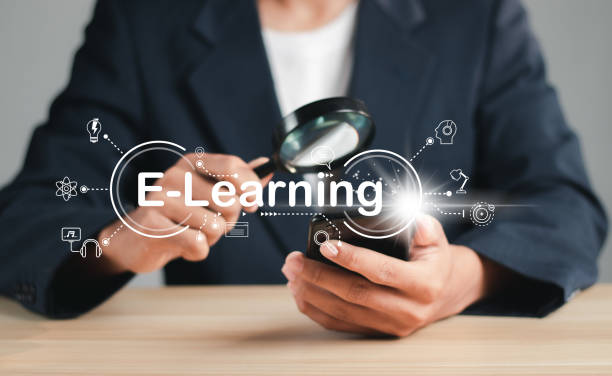
To achieve powerful On-Page SEO, you need to pay special attention to several vital elements on each page.
These elements send important signals to search engines, helping them understand and rank your content.
These elements include Title Tag, Meta Description, Headings (H1-H6), keyword density, image optimization, and URL.
The title tag should contain the main keyword and be compelling to encourage users to click.
Meta descriptions, while not directly influencing ranking, improve the Click-Through Rate (CTR).
Using structured headings aids content readability and defines the information hierarchy for search engines.
Image optimization includes using Alt tags and compression for faster loading speed.
The table below provides a summary of the most important On-Page elements along with their explanations:
| Element | Description | Importance for On-Page SEO |
|---|---|---|
| Title Tag | Text displayed in the browser’s title bar and search results. | The most important On-Page element; should include keywords and be compelling. |
| Meta Description | A short summary of the page’s content displayed below the title in search results. | Increases Click-Through Rate (CTR); encourages users to visit. |
| Headings (H1-H6) | Internal headings for content organization. H1 is the main heading. |
Improves readability and content hierarchy for users and crawlers. |
| Keyword Density | The percentage of keyword repetition in the content. | Should be natural; avoid keyword stuffing. |
| Image Optimization | Image compression, use of Alt tags, and appropriate file naming. | Improves site speed and image interpretability for search engines. |
| URL Structure | The address of each page on the site. | Should be short, descriptive, and include keywords. More information about SEO-friendly URLs |
This is a comprehensive guide for correctly implementing internal site optimization and helps you prepare your pages for the best performance in search results.
This specialized approach focuses on precise details.
Content: The Undisputed King of On-Page SEO
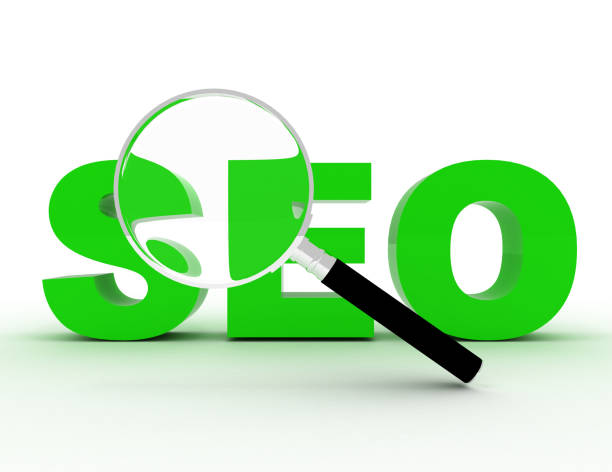
As it’s often said, “Content is king.”
This statement holds especially true in the realm of On-Page SEO.
Producing high-quality, relevant, comprehensive, and unique content is the backbone of any successful SEO strategy.
Your content should answer user questions, provide valuable information, and engage them.
Naturally using keywords, maintaining appropriate density, and providing deep and rich content shows search engines that your page is a credible and reliable source.
Strictly avoid copied content, as this can severely harm your ranking.
In addition to text, use various media like images, videos, and infographics to enrich your content and increase its appeal.
This educational and engaging approach helps you create content that is both attractive to users and noticed by search engines.
Producing thought-provoking content can increase user dwell time on the site, which is a positive signal for ranking.
Did you know that 85% of customers check your company’s website before any interaction?
With RasaWeb, build a corporate website that befits your credibility.
✅ Increase brand credibility and customer trust
✅ Attract high-quality leads
⚡ Get free website design consultation!
Technical Aspects of On-Page SEO: Structure and Sitemaps
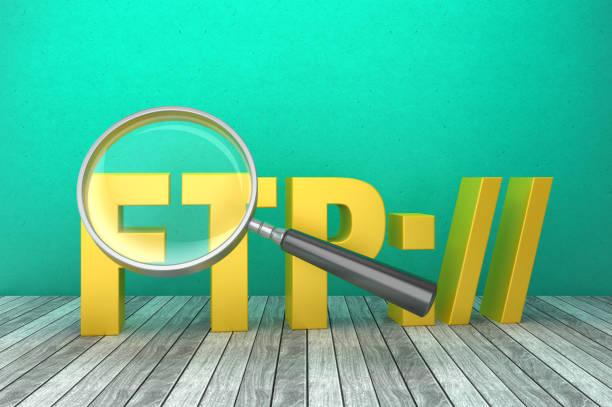
In addition to content and On-Page elements, the technical aspects of On-Page SEO are also highly important.
Site structure, XML Sitemaps, and the Robots.txt file are three essential pillars in this area that help search engines crawl and index your site more effectively.
A logical and hierarchical site structure not only improves user experience but also helps distribute “Link Juice” throughout the site.
Using a clean and understandable URL structure is also part of this technical aspect.
An XML sitemap is a roadmap for search engines that introduces all important pages of your site to them, ensuring that no page remains hidden from crawlers.
The Robots.txt file also tells search engines which parts of your site they can crawl and which they cannot.
Understanding and correctly implementing these aspects is essential for strong On-Page SEO.
This section is a precise and specialized guidance for optimizing your site’s technical structure.
Internal Linking Strategies for SEO
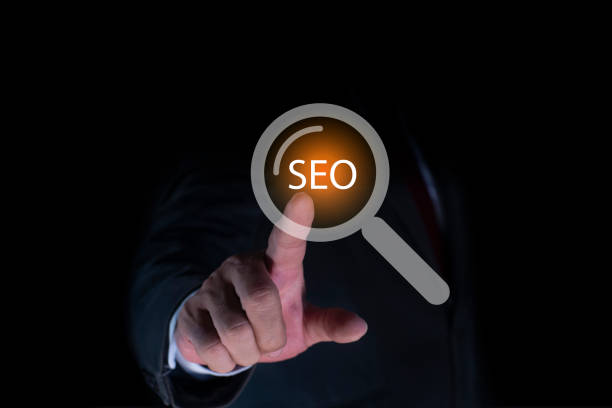
Internal linking is one of your most powerful tools in On-Page SEO that is often overlooked.
Internal links are links that point from one page on your website to another page on the same website.
These links serve three main purposes: First, they help users navigate your site and find related content.
Second, they help search engines understand your site’s structure and discover new pages.
Third, they help distribute “ranking power” or “link juice” throughout the site, meaning your more important pages can gain authority from more powerful pages through internal links.
For effective internal linking, use descriptive and keyword-rich Anchor Texts and ensure that links are placed logically and within the context of the content.
Too many useless or irrelevant internal links can have the opposite effect.
This section is educational and analytical, providing you with a practical strategy to improve your site’s structure through internal links.
This aspect of On-Page SEO also strongly influences user experience.
User Experience and Core Web Vitals in On-Page SEO
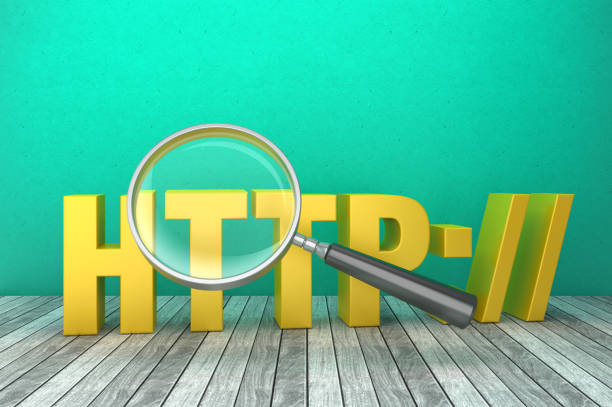
Search engines, especially Google, increasingly emphasize User Experience (UX) as a ranking factor.
Therefore, improving UX is a critical component of modern On-Page SEO.
Core Web Vitals are a set of real, user-centric metrics that measure web performance from the user’s perspective.
These metrics include LCP (Largest Contentful Paint) for loading speed, FID (First Input Delay) for interactivity, and CLS (Cumulative Layout Shift) for visual stability.
Optimizing for these metrics means ensuring high loading speed, quick site response to user actions, and no sudden changes in page layout.
These directly impact user experience and send positive signals to Google.
Sites with poor user experience usually have a high bounce rate and low user dwell time, both of which are negative signals for ranking.
The table below helps you better understand Core Web Vitals:
| Metric | Description | Goal (Good) |
|---|---|---|
| Largest Contentful Paint (LCP) | The time required to load the largest content element on the page. | Less than 2.5 seconds. More information about LCP |
| First Input Delay (FID) | The time from the user’s first interaction with the page until the browser’s response. | Less than 100 milliseconds. |
| Cumulative Layout Shift (CLS) | The extent of visual stability of content during page loading. | Less than 0.1. |
This section is explanatory and specialized, highlighting the importance of speed and visual stability in On-Page SEO.
Monitoring and Analysis of On-Page SEO Performance
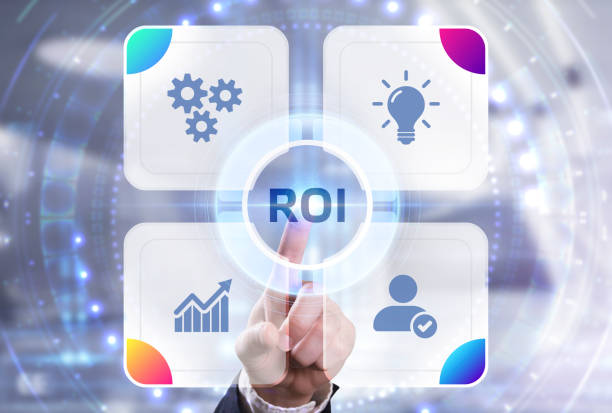
After implementing On-Page SEO strategies, your work is not over.
Continuous monitoring and analysis of site performance is a critical step for sustainable success.
Tools like Google Analytics and Google Search Console provide valuable information about site traffic, keywords, popular pages, bounce rate, and crawl errors.
By analyzing this data, you can identify the strengths and weaknesses of your On-Page SEO strategy and make data-driven decisions for future optimizations.
For example, if a particular page receives little traffic, it may need keyword reconsideration or content improvement.
Or if you have a high bounce rate, perhaps your site’s user experience needs improvement.
This analytical approach allows you to continuously refine and optimize your strategy and stay informed about the latest news and changes in Google’s algorithms.
Are you falling behind in competition with large online stores?
RasaWeb, with professional e-commerce website design, brings your business online and increases your market share!
✅ Increase brand credibility and customer trust
✅ Easy shopping experience leading to more sales
⚡ Act now for a free website design consultation!
Common Mistakes in On-Page SEO and How to Avoid Them
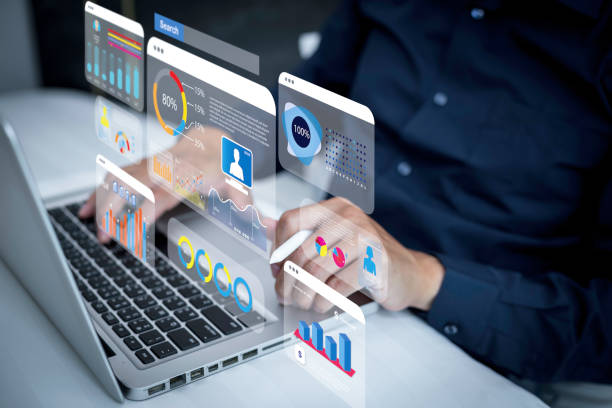
Even the most experienced SEO professionals can make mistakes, especially in the field of On-Page SEO, which requires attention to detail.
Some common mistakes include excessive use of keywords (Keyword Stuffing), neglecting site speed, not optimizing images, duplicate content, and not having an SEO-friendly URL structure.
Keyword stuffing is not only annoying for users but can also be identified by Google as a spam technique.
Duplicate Content can also confuse search engines and harm your ranking.
To avoid these mistakes, always focus on providing the best user experience and high-quality content.
Regularly check your site speed and use image compression tools.
Also, remember that each page should have a clear purpose and address keywords relevant to that purpose.
This section is a comprehensive guide to avoiding common pitfalls in On-Page SEO and helps you benefit from the experience of others.
Future Trends and Advanced On-Page SEO Techniques
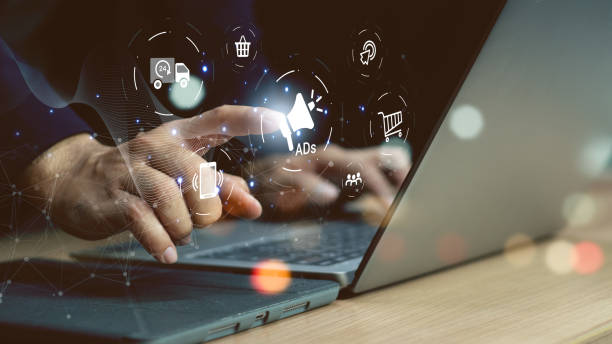
The world of SEO is rapidly changing, and On-Page SEO is no exception.
Future trends include the increasing importance of Artificial Intelligence and Machine Learning in content understanding (such as Google’s BERT and MUM algorithms), voice search, image search, and E-A-T (Expertise, Authoritativeness, Trustworthiness).
To stay competitive, you need to adapt to these changes.
For example, for voice search, optimize your content to answer user questions naturally and conversationally.
For E-A-T, focus on demonstrating your expertise, authority, and trustworthiness through in-depth content, credible authors, and high-quality internal and external links.
Also, optimizing for Featured Snippets and other Rich Results can significantly increase your visibility in search results.
This specialized and informative section gives you insight into the future of On-Page SEO and advanced techniques you can use to stay ahead of the competition.
By continuously optimizing for On-Page SEO, you can always be one step ahead.
Frequently Asked Questions
| No. | Question | Answer |
|---|---|---|
| 1 | What is On-Page SEO? | On-Page SEO refers to a set of actions performed within a website (on its pages) to improve its ranking in search engine results. This includes optimizing content, site structure, and HTML codes. |
| 2 | Why is On-Page SEO important? | On-Page SEO helps search engines better understand page content and determine if that page is relevant and valuable for user searches. This better understanding leads to higher rankings. |
| 3 | What is the first and most important step in On-Page SEO? | Keyword Research is the most important initial step. By finding appropriate keywords, targeted content relevant to user needs can be produced. |
| 4 | What is the role of the Title Tag in On-Page SEO? | The title tag is one of the most important ranking factors and should include the main keyword. This tag is displayed as the page title in search results and influences the Click-Through Rate (CTR). |
| 5 | What is the importance of Meta Description? | The meta description does not directly affect ranking, but by providing an attractive summary of the page’s content in search results, it can encourage users to click, thereby increasing the Click-Through Rate (CTR). |
| 6 | Why is the use of headings (H1, H2, etc.) important in content? | Headings help structure content and improve readability for users and search engine crawlers. Using keywords in headings also helps search engines better understand the topic. |
| 7 | What does Image Optimization in On-Page SEO include? | It includes compressing images to reduce size, using descriptive and relevant file names, and filling the Alt tag (alternative text) with relevant keywords to help search engines understand the image content. |
| 8 | What is Internal Linking in On-Page SEO? | Internal linking refers to creating links between different pages of a website. This helps distribute page authority (Link Equity), improve user experience, and assist search engine crawlers in discovering new pages. |
| 9 | Why is Page Speed important for On-Page SEO? | Page speed is a direct ranking factor and significantly impacts user experience. Slow pages can lead to an increased Bounce Rate and reduced user engagement. |
| 10 | What role does quality content play in On-Page SEO? | High-quality, comprehensive, unique, and valuable content for the user is the core of On-Page SEO. This content not only attracts and retains users but also sends positive signals to search engines and helps achieve better rankings. |
And other services of RasaWeb Advertising Agency in the field of advertising
Smart Website Development: An effective tool for user interaction through user experience customization.
Smart Website Development: An effective tool for analyzing customer behavior using real data.
Smart Conversion Rate Optimization: A new service for increasing sales through Google Ads management.
Smart Digital Branding: Designed for businesses looking to manage campaigns through optimizing key pages.
Smart Social Media: A creative platform for improving sales by precise audience targeting.
And over hundreds of other services in the field of internet advertising, advertising consultation, and organizational solutions
Internet Advertising | Advertising Strategy | Advertorials
References
Internal SEO Tutorial on Asemooni
Comprehensive Guide to On-Page SEO on Rastinweb
On-Page SEO Checklist on Webramz
What is On-Page SEO and How to Do It? – Faradars
? For a brilliant presence in the digital world, RasaWeb Digital Marketing Agency with its comprehensive services, including corporate website design, paves the way for your business’s success.
📍 Tehran, Mirdamad Street, next to Central Bank, Southern Kazeroun Alley, Ramin Alley, No. 6



